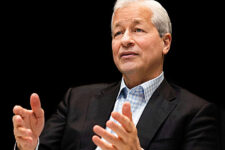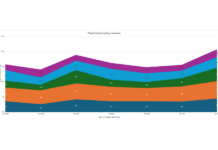Banks’ second quarter 2024 fixed income revenues have seen modest to substantial increases, with Goldman Sachs an outlier, witnessing substantial drops in FICC intermediation and debt underwriting. The biggest gains were seen in Morgan Stanley’s fixed income underwriting, while Wells Fargo and Bank of America’s FICC revenues were broadly flat. JP Morgan’s fixed income revenues were slightly up, while Citi’s were down slightly.
JP Morgan’s fixed income markets were up 5% against the second quarter of 2023, to US$4.8 billion, largely driven by securitised products, the firm said.

Jamie Dimon, chair and CEO, said, “While market valuations and credit spreads seem to reflect a rather benign economic outlook, we continue to be vigilant about potential tail risks.
“Next, there has been some progress bringing inflation down, but there are still multiple inflationary forces in front of us: large fiscal deficits, infrastructure needs, restructuring of trade and remilitarisation of the world. Therefore, inflation and interest rates may stay higher than the market expects.”
At Goldman Sachs, the firm’s Fixed Income, Currencies and Commodities (FICC) intermediation stood at US$2.33 billion, and debt underwriting in Q2 2024 stood at US$622 million. In Q2 2023, FICC intermediation was US$2.09 billion, and debt underwriting was US$448 million, drops of 10% and 28%, respectively.

David Solomon, chair and CEO of Goldman Sachs, said, “We are pleased with our solid second quarter results and our overall performance in the first half of the year, reflecting strong year-on-year growth in both global banking and markets and asset and wealth management.”
At Bank of America, FICC revenue was flat against Q2 2023, at US$2.7 billion.
BoA chief financial officer Alastair Borthwick, said, “Our net income was US$6.9 billion, and we returned US$5.4 billion to shareholders through common stock dividends and share repurchases. Our diverse businesses leveraged our innovative platforms and services, attracting new client relationships and delivering for our clients, shareholders and the communities we serve.”
Wells Fargo saw its FICC revenues for Q2 2024 hit US$1.2 billion, up slightly from US$1.1 billion in Q2 2023.
Wells Fargo CEO Charlie Scharf said, “The investments we have been making allowed us to take advantage of the market activity in the quarter with strong performance in investment advisory, trading, and investment banking fees. Credit performance was consistent with our expectations, commercial loan demand remained tepid, we saw growth in deposit balances in all of our businesses, and the pace of customers reallocating cash into higher yielding alternatives slowed.”
Fixed income revenues at Citi were slightly down year-over-year (3%), with revenues of US$3.6 billion, largely driven by rates and currencies on lower volatility and tighter spreads, partially offset by strength in spread products and other fixed income (up 20%), primarily driven by continued loan growth and higher securitisation and underwriting fees.

Citigroup CEO Jane Fraser said, “Markets had a strong finish to the quarter leading to better performance than we had anticipated. Fixed income was slightly down year-over-year and equities was up 37%, driven by strong performance in derivatives.”
Morgan Stanley’s fixed income underwriting revenues increased from a year ago, primarily driven by higher non-investment grade issuances, the firm said. The firm reported a 16% increase in fixed income revenues against Q2 2023, at US$2 billion against US$1.7 billion in Q2 2023
Fixed income underwriting stood at US$675 million, against US$395 million in Q2 2023, a 70% jump.
Morgan Stanley CEO Ted Pick said, “The firm delivered another strong quarter in an improving capital markets environment, resulting in first half 2024 revenues of US$30.2 billion.”
©Markets Media Europe 2024
©Markets Media Europe 2025


























